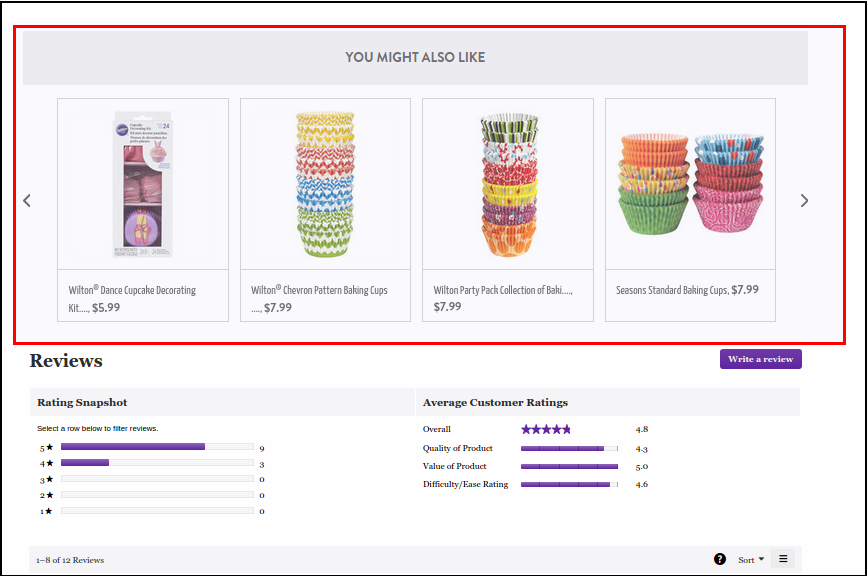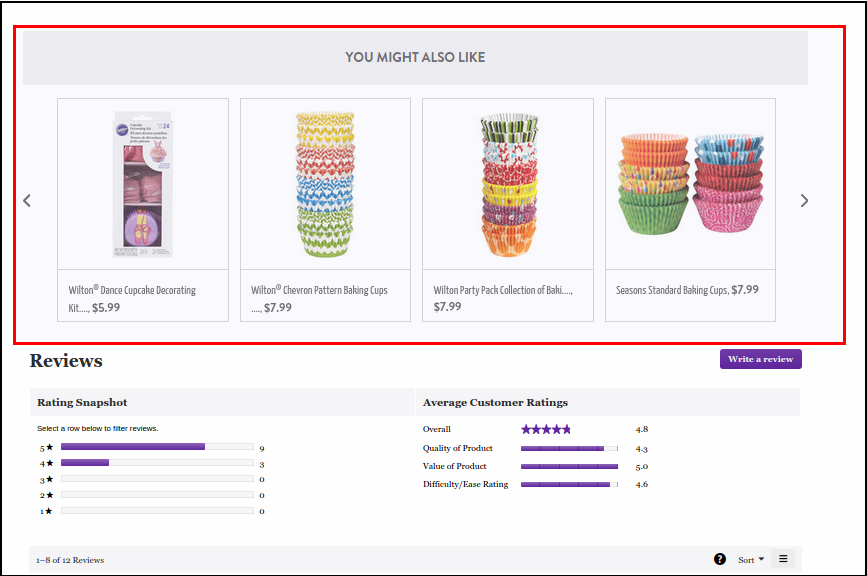
Understanding Predictive Merchandising for your Demandware Store
By Joseph Greenwood, Technical Architect
If you work in eCommerce, you’re well aware of the importance of personalizing the online shopping experience for consumers in order to create engaging experiences and build customer loyalty. One of the key ways this is accomplished is by delivering relevant product recommendations at crucial points throughout the actual shopping experience. From scheduled promotional marketing emails, to on-site, real-time recommendations and abandoned cart and remarketing emails, delivering relevant recommendations throughout the customer’s shopping experience will resonate with your customers and create memorable shopping experiences.
The most basic implementation of recommendations is usually a “one size fits all” approach based on sales data. The underlying rule in this case is “customers who bought product A, also bought product B.” However, it ignores the individual’s behavior at all touch points prior to conversion.
A more advanced approach ties together sales data (from one or more channels) along with online analytical data (from one or more channels) and utilizes custom code or a third party vendor via integration to deliver relevant real time recommendations. The underlying rule in this case is “customers who bought or viewed product A, also bought or viewed product B.” This type of analytical data is more robust, but usually is limited to one channel (i.e. your website) and therefore ignores how your consumer has interacted with your brand via other channels (i.e. in your store).
“Big Data” vs. “Small Data”
In general, the approaches mentioned above apply a broad brush by utilizing “big data” to analyze information gathered from various customer touch points. However, a truly tailored customer experience is more of a “small data” problem.
Demandware is taking a small data approach with their predictive merchandising offerings. Instead of drawing conclusions from the hundreds of thousands of visits, orders, and views (the 30,000 foot view), the platform’s predictive machine learning engine looks at a comprehensive view of the individual consumer activity across channels to create a more tailored, consistently relevant and individualized experience (1,000 foot view).
Demandware’s engine uses machine learning algorithms and will automatically “tune” itself to your merchandise, your customers, and your business dynamics. Once enabled, the engine is ready to deliver relevant data about consumers within 72 hours.
Demandware’s initial roll out of their predictive merchandising offering manifests itself in two places. The first is via “Recommenders” and the second is “Predictive Email”. We will take a look at both of these features in detail.
Recommenders
Recommenders are the physical viewports that display data collected in the predictive engine. The recommenders, in tandem, deliver the data collected in the personalization engine across the shopping experience to keep relevance for the duration of the session.
There are three types of recommenders in the initial product offering:
- Products Recently Viewed
- Category
- Product-to-Product.
Products Recently Viewed deliver a set of alternative or complimentary items based on the individualized consumer viewing history. This looks like the typical recommendations part of a page and is sourced by the predictive engine.

The Category recommender is designed to live on category pages and provides the products chosen by the engine for the shopper from the category being viewed.
The Product-to-Product recommender suggests products with a high affinity to the product being viewed. This type of recommender honors the configured “rules” created in the rules engine. This recommender is designed to be used on the product display page (PDP).
Predictive Email
Predictive email personalizes each message for everyone in the email list with relevant products, offers, and content. According to Demandware, predictive email drives 10-20% more revenue and 20-40% higher click thru rate than static emails.
By combining retail data, customer activity history, product and marketing data, the engine anticipates the most relevant content for the individual consumer.
It is important to note that Demandware predictive email is not a free offering with the platform. It is a distinct product offering that requires a contract and setup. It is also important to note that although Demandware is capable of sending emails, is not an email service provider. Demandware recommends that you continue to integrate with your ESP and enable Demandware’s engine to “infuse” the email content with the predictive results.
Conclusion
The predictive marketing offering is the beginning of a larger vision to include other areas such as Predictive Site Search, Predictive SEO, Retargeting, Triggered Remarketing, and Network data.
As of this writing, for North American customers, predictive merchandising is being rolled out to select charter customers. For other customers it is set to be generally available sometime in Q1 2016. Predictive email is currently available for North American customers and can be deployed in as little as 4 weeks.
Check out our Demandware page to learn more.
